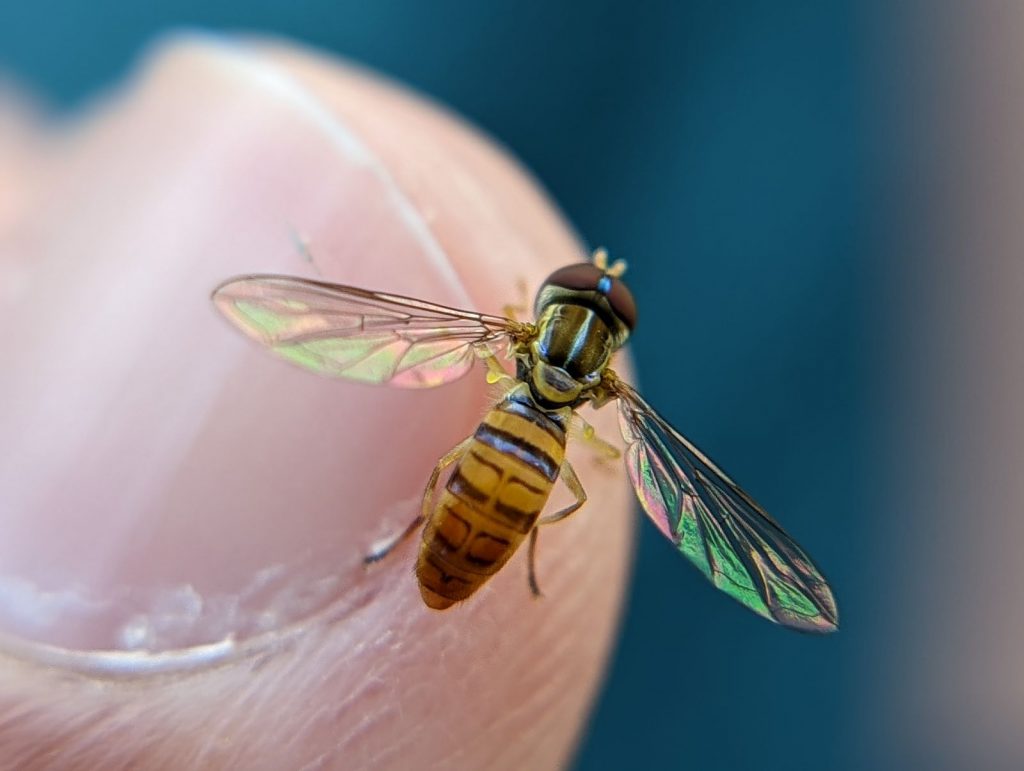
Photo of maize calligrapher fly taken with a smartphone camera by Edwin Guevara
“If you change the way you look at things, the things you look at change.” -Dr. Wayne Dyer
These days, most of us have a high-tech scientific instrument on hand at all times. Can you guess what it is?
The smartphone camera has revolutionized research and data collection in the field, lab, and classroom. New applications for high-powered cameras emerge daily. Maryland Department of Natural Resources biologists use these cameras to conduct their own field research. You can follow their lead, using your selfie-capturing devices to explore the world outside in a new and different way!
Identification and Citizen Science: Applications and social networks like iNaturalist, eBird, Merlin, Audubon Migration Explorer, and the Maryland Biodiversity Project gather information about plant and animal species in a geographical area. By logging findings and photos taken with phone cameras, citizen scientists contribute valuable data points that can be verified and used to help understand species ranges, distribution, migration, and other patterns. Plus, these tools help with general species identification are useful to naturalists-in-training.
Quality Data Collection: In the field, smartphone cameras are used to verify data, ensuring that reports and findings are as accurate as possible. For example, the Maryland Biological Stream Survey requires staff to confirm fish identifications using photos taken by volunteers with smartphones during surveys. The smart phone photos allow for data verification and makes participation in research accessible to non-scientists.
Documentation of Records: The convenience and accuracy of smartphone cameras make them tools indispensable for quickly backing up data sheets and scanning photo records of field conditions. Barcode and QR code technologies embedded in phone cameras allow scientists to scan barcodes for projects like Chronic Wasting Disease surveys. These codes allow researchers to track samples and receive lab results in real time.
Education: User-friendly photography tools have made studies of the natural world accessible to the masses! Advances in phone camera technologies have allowed educators to show students the natural world up-close, including high-quality videos of nature in action. The ever-expanding world of smartphone applications makes learning about nature fun and engaging.

Some uses of cameras in the field: documenting information like tracking band numbers, confirming species identifications, and documenting data sheets
Explore Macro Photography: Get a close look at the natural world through your own phone camera. Smartphone cameras have powerful zooming capabilities, but adding a clip-on macro lens can enable a phone camera to take extreme close-up photography that brings out details invisible to the naked eye. Don’t forget to submit your best photos to the Maryland Natural Resource Photo Contest, which will open in spring 2023!
dnr.maryland.gov
Sarah Witcher is an education biologist with DNR’s Wildlife and Heritage Service. Annalise Kenney is the department’s publications and design manager.
Article appears in Vol. 25, No. 4 of the Maryland Natural Resource magazine.
